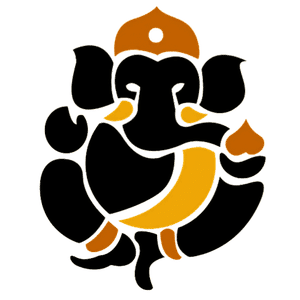A Cricket Saga of Rumor and Speculation
In the expansive realm of cricket, rivalries and controversies often arise, captivating fans and shaping the narrative of the sport. Among these, the perceived rift between Yuvraj Singh and Mahendra Singh Dhoni stands out as a particularly intriguing saga. This supposed feud, characterized by whispers, speculation, and media frenzy, reflects the complexities of team dynamics in professional sports. Although never officially acknowledged by either player, their interactions and shifts in form fueled a narrative that has persisted in the cricketing community. This post aims to explore the origins of this alleged controversy, its evolution, and its impact on both players and the Indian cricket team.
The Seeds of Discord: A Shift in Dynamics
The story begins in the early 2000s, a period marked by Yuvraj Singh’s meteoric rise. Known for his flamboyant batting and remarkable all-round skills, Yuvraj was among the brightest stars in cricket during this era. However, a significant transition occurred when Dhoni assumed the captaincy of the Indian team in 2007. This shift not only altered the team’s leadership dynamic but also set the stage for the speculation that would envelop their relationship.
As Dhoni’s captaincy brought new strategies and playing styles, Yuvraj’s role within the team began to shift. His form fluctuated, and with it, the perceptions surrounding his relationship with Dhoni. The question remains: Was there ever an open acknowledgment of discord between the two, or was the narrative primarily the creation of external observers?
Absolutely, there has been no formal confirmation of any rift. Media speculation and fan interpretations have largely driven the perception of a feud. Despite the absence of direct conflict, the ambiguity surrounding their relationship allowed for rumors and narratives to flourish, eventually becoming a pervasive part of Indian cricket folklore.
Dhoni’s Rise, Yuvraj’s Struggles: A Turning Point
The year 2007 marked not only a new chapter for Dhoni as he led India to a historic World T20 victory but also a turning point for Yuvraj Singh. This triumph solidified Dhoni’s position as a leading figure in Indian cricket, paving the way for his future as a captain across all forms of the game. For Yuvraj, this period proved challenging. The changing landscape of the team under Dhoni’s leadership often resulted in diminished opportunities for Yuvraj, contributing to the speculation regarding their relationship.
In a revealing 2016 interview, Yuvraj candidly reflected on the impact of Dhoni’s captaincy on his career. He admitted to a decline in form coinciding with Dhoni’s ascent and expressed frustration over a perceived reduction in playing opportunities. This candidness only served to add traction to the narrative of rivalry, as it highlighted the emotional undercurrents that accompanied their evolving dynamic.
Fueling the Flames: The ‘Cut Finger Gesture’ and Media Speculation
While both players maintained a mostly silent stance on their relationship, the media’s insatiable appetite for a story created an environment ripe for speculation. One incident in particular that captured public attention was the notorious “cut finger gesture” during a match against England in 2012. Yuvraj’s gesture toward Dhoni ignited a media frenzy, with outlets speculating about the intention behind the action. In the absence of any clarifying statements from either player, the incident became a focal point for analysis and debate.
This incident exemplifies the power of perception and interpretation in the media. While some fans interpreted the gesture as harmless or playful, others saw it as indicative of deeper tensions. This divergence in understanding reinforces the ambiguity surrounding the players’ relationship and reflects the broader narrative of perceived rivalries in sports.
Shifting Dynamics and Public Reactions: Success and Discontent
Throughout Dhoni’s captaincy, the Indian team achieved remarkable success, marked by memorable victories and accolades. However, this success sometimes came at a cost to Yuvraj, who often found his playing time limited. Such dynamics fueled public debate about fairness and opportunity within the squad, further complicating the narrative surrounding the two players.
Recent discussions, exemplified by a YouTube video titled “Dhoni’s Captaincy: Was it fair to Yuvraj?”, illustrate the ongoing discourse about selection strategies during Dhoni’s tenure. Fans voiced their opinions on whether Yuvraj was unfairly sidelined, igniting passionate dialogues about team selection criteria and the implications for players who were once regarded as key fixtures.
The Dawn of a New Era: Reconciling the Past
As time progressed and both players transitioned to the twilight of their careers, a sense of reconciliation began to surface. Public appearances together, especially during the 2019 World Cup, offered glimpses into a renewed camaraderie. With Yuvraj retired from international cricket and Dhoni continuing to lead the team, their interactions signified a shift from speculation to acceptance.
A particularly touching moment was captured during the tournament, where social media showcased the two players enjoying each other’s company, subtly hinting at reconciliation. These shared moments reassured fans and served as a refreshing reminder of their shared history and legacy.
Conclusion: A Legacy Intertwined
The Yuvraj Singh vs. Mahendra Singh Dhoni controversy reflects a multi-faceted narrative steeped in sport’s emotional complexities. Was it a genuine feud, or merely an embodiment of media speculation? As fans, we find ourselves pondering these questions while acknowledging the shared contributions of both players to Indian cricket’s rich tapestry.
While both Yuvraj and Dhoni have chosen to move past the controversy, their legacies will remain intertwined. The depth of their experiences, combined with the complexities of team dynamics and public interpretation, renders their story a compelling case study in the world of sports.
Ultimately, this narrative serves as a reminder of the enduring power of speculation within the world of sports and invites us to consider the nuanced relationships that shape its history. These two icons of Indian cricket may have faced their share of challenges, but they emerged as embodiments of resilience, talent, and growth—a legacy worthy of admiration and recognition.
